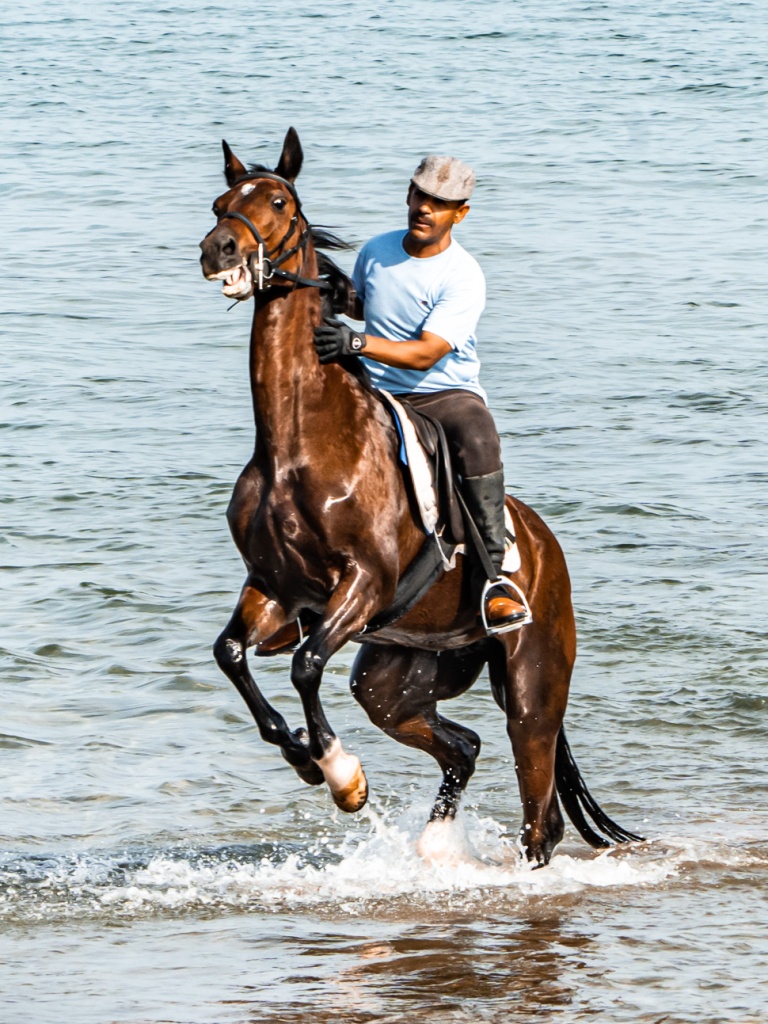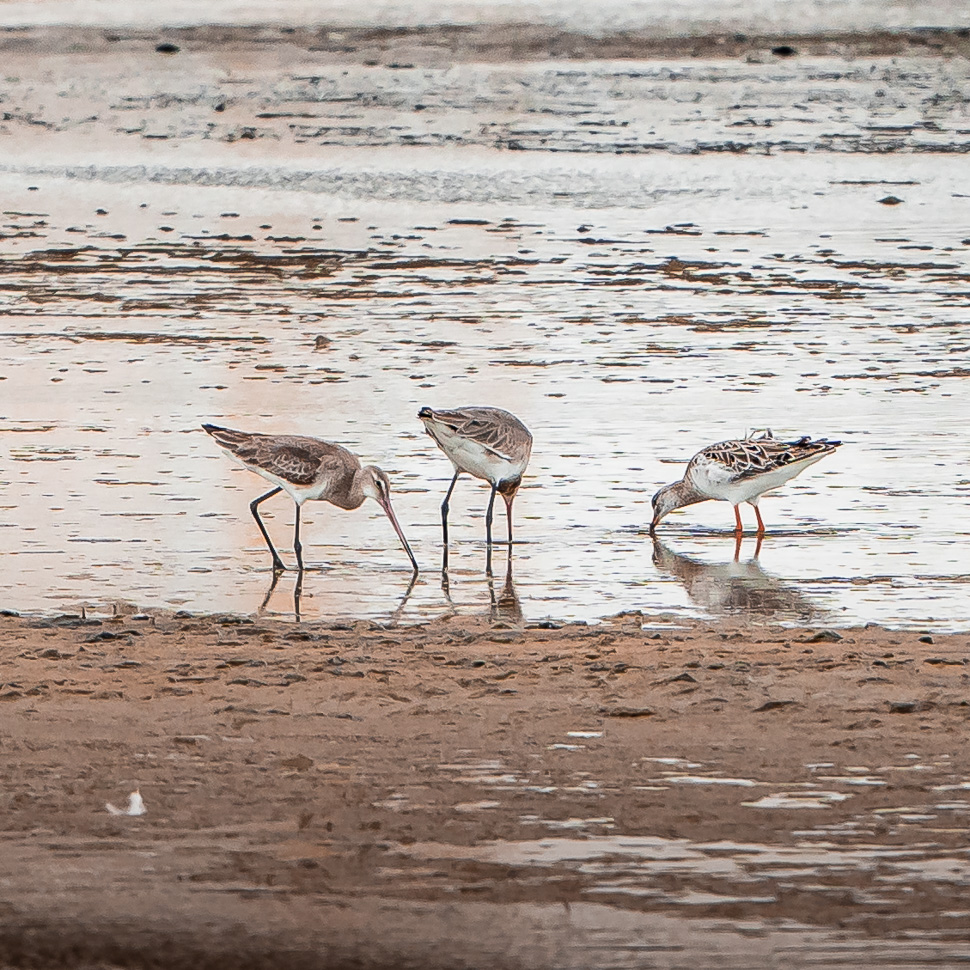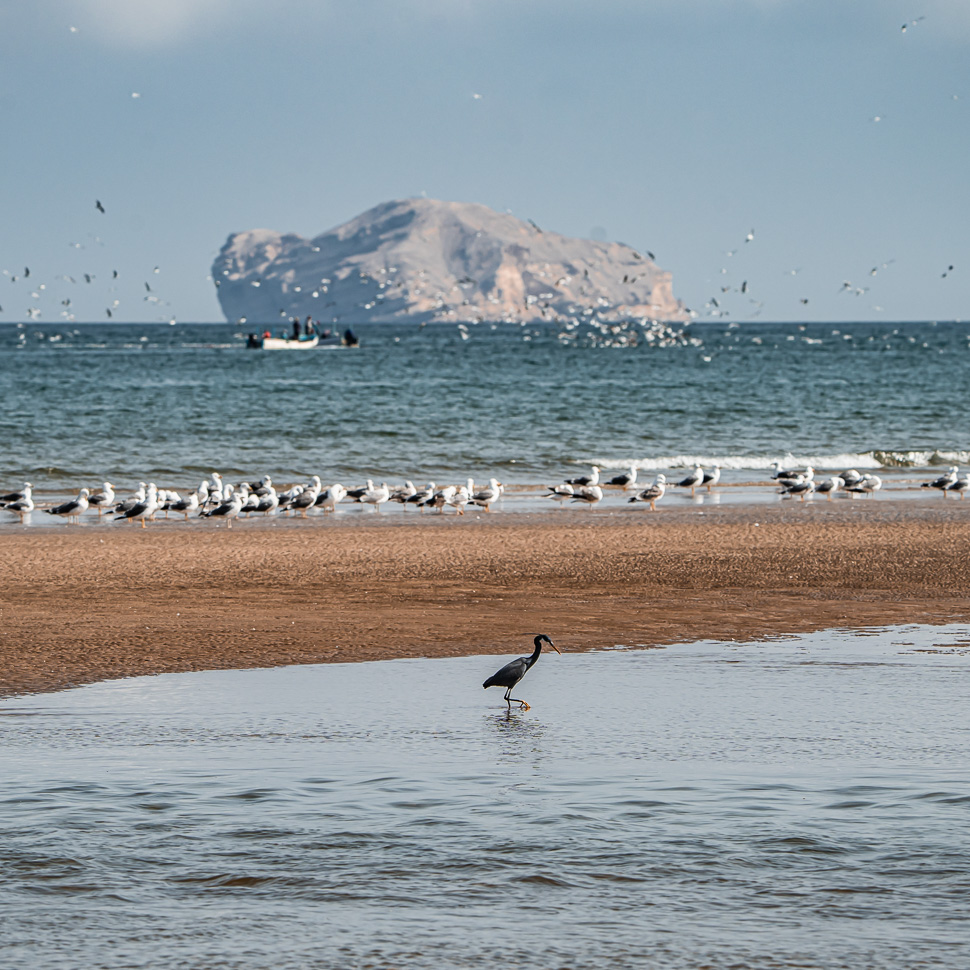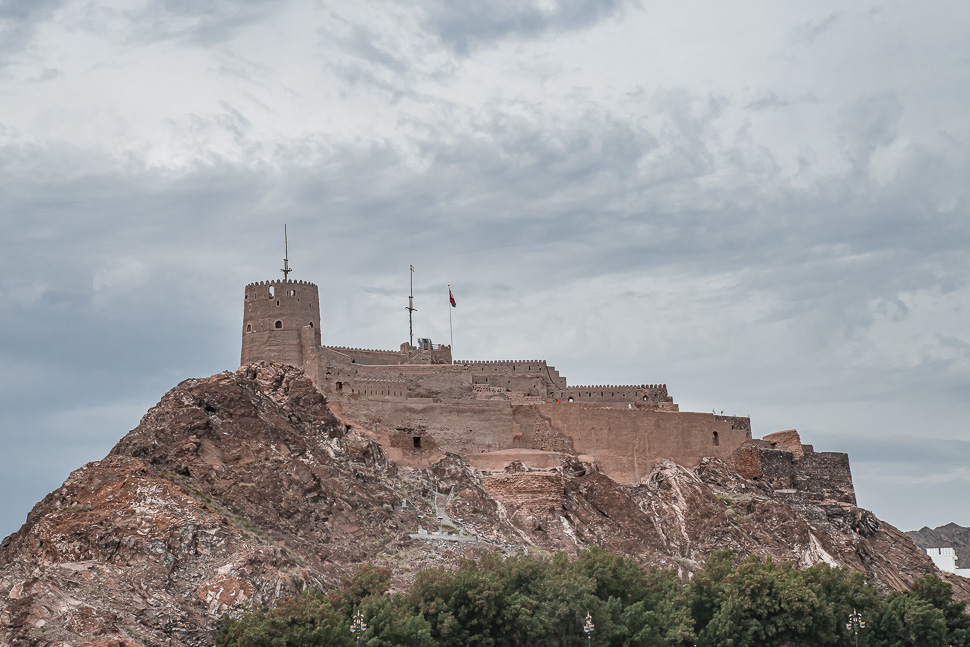
We had reached Muscat, the capital of Oman, looking forward to experiencing this city known for its long trading history. As an important port between the west and the east, Muscat was ruled by various indigenous tribes as well as foreign powers such as the Persians, the Portuguese Empire and the Ottoman Empire at various points in its history. A regional military power in the 18th century, Muscat’s influence extended as far as East Africa and Zanzibar. It always attracted foreign traders and settlers. Since the accession of Qaboos bin Said as Sultan of Oman in 1970, Muscat has experienced rapid infrastructural development that has led to the growth of a vibrant economy and a multi-ethnic society.
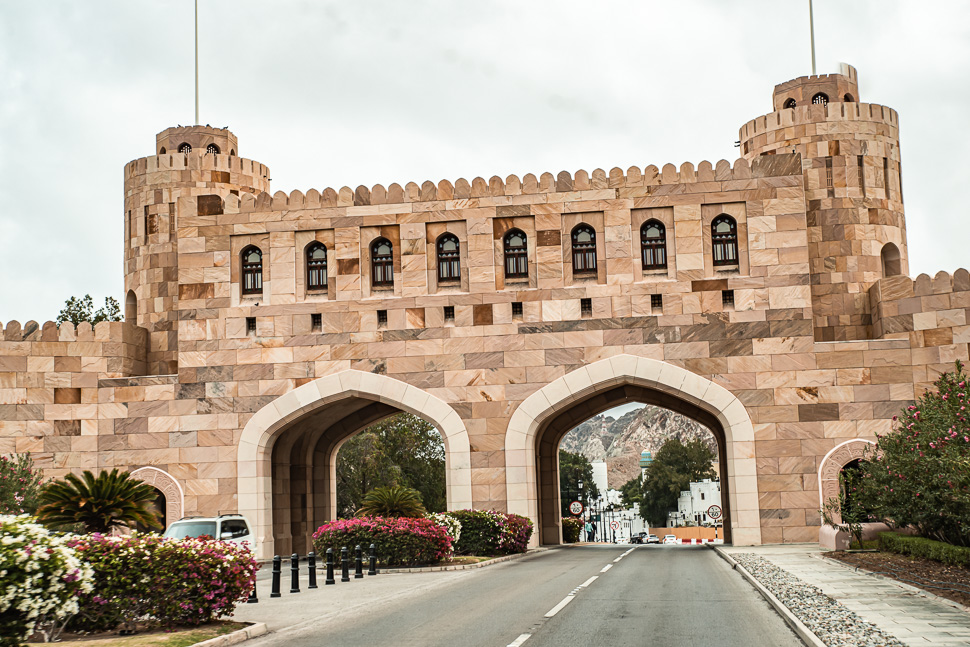
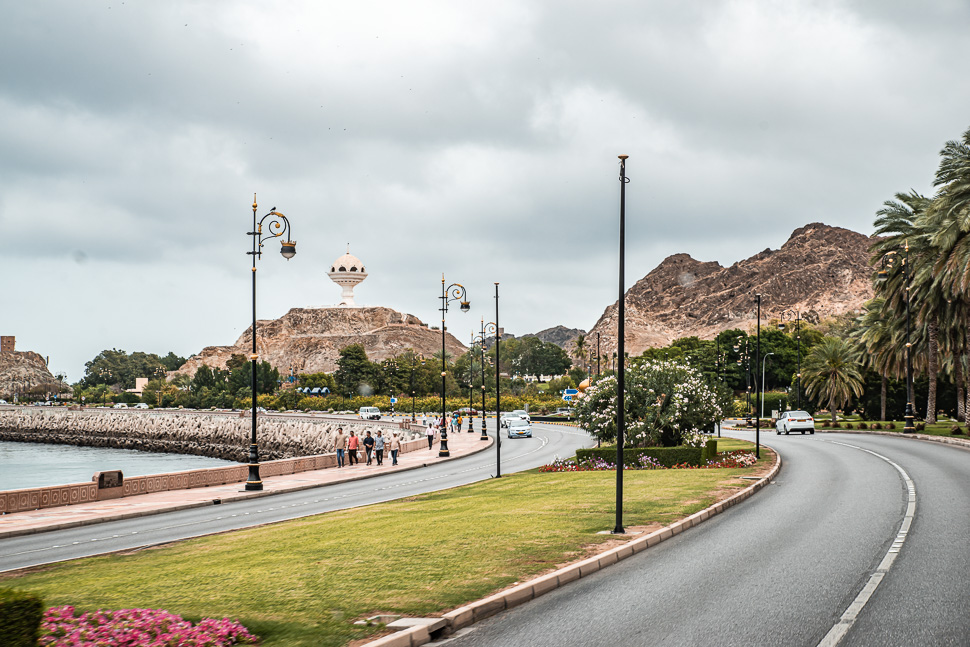
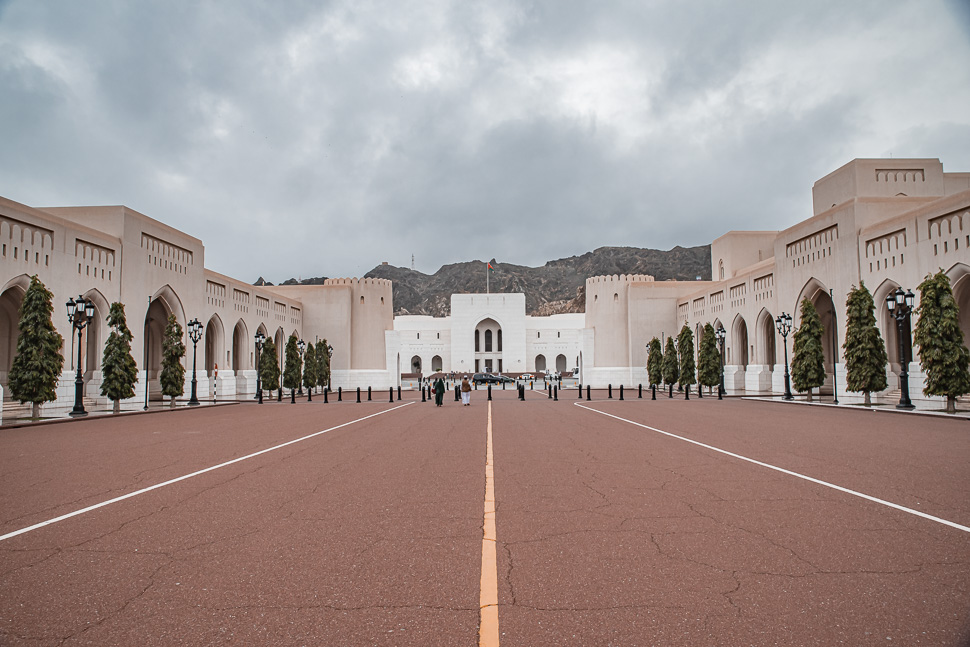
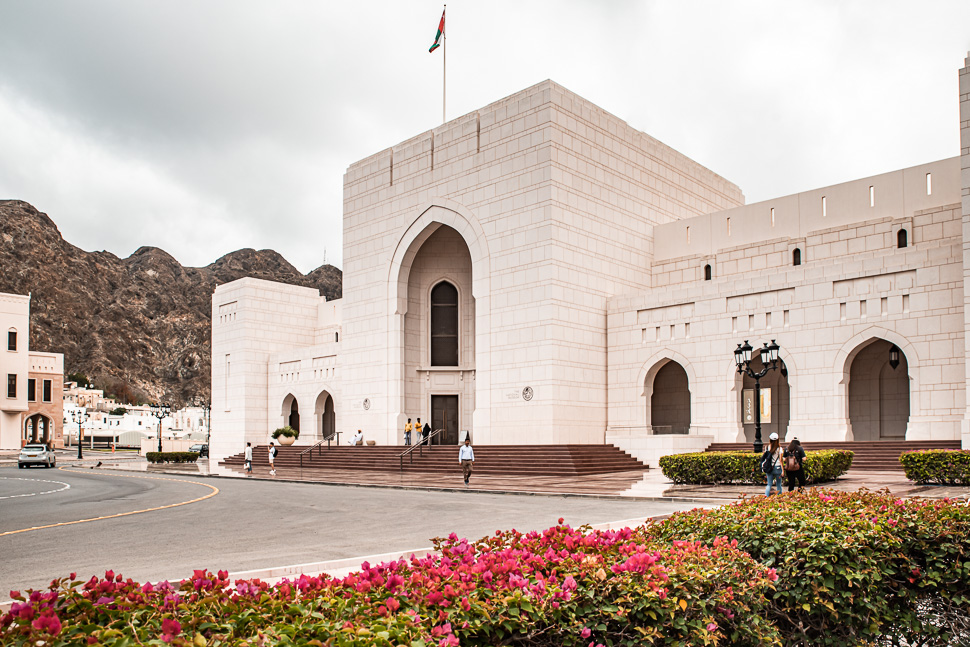
We visited the National Museum of Oman, a striking new building, where the long national history and the many foreign influences as well as the importance of trade are well documented.
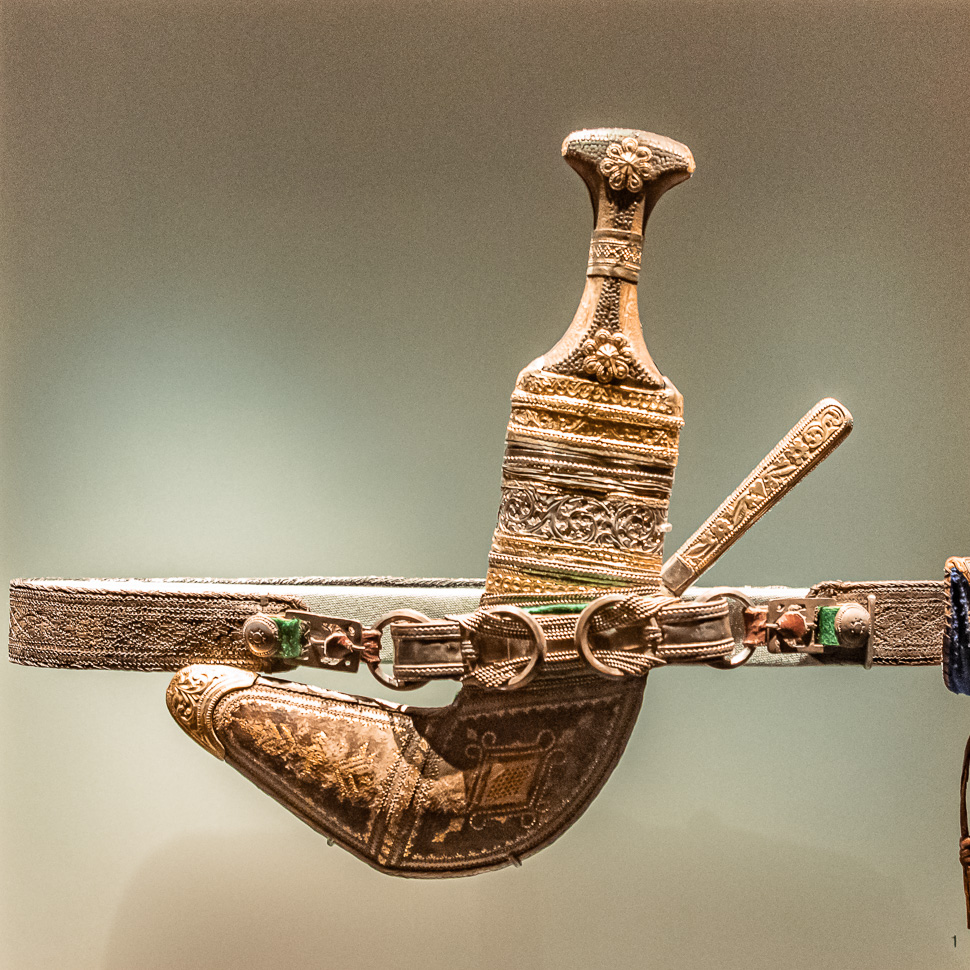
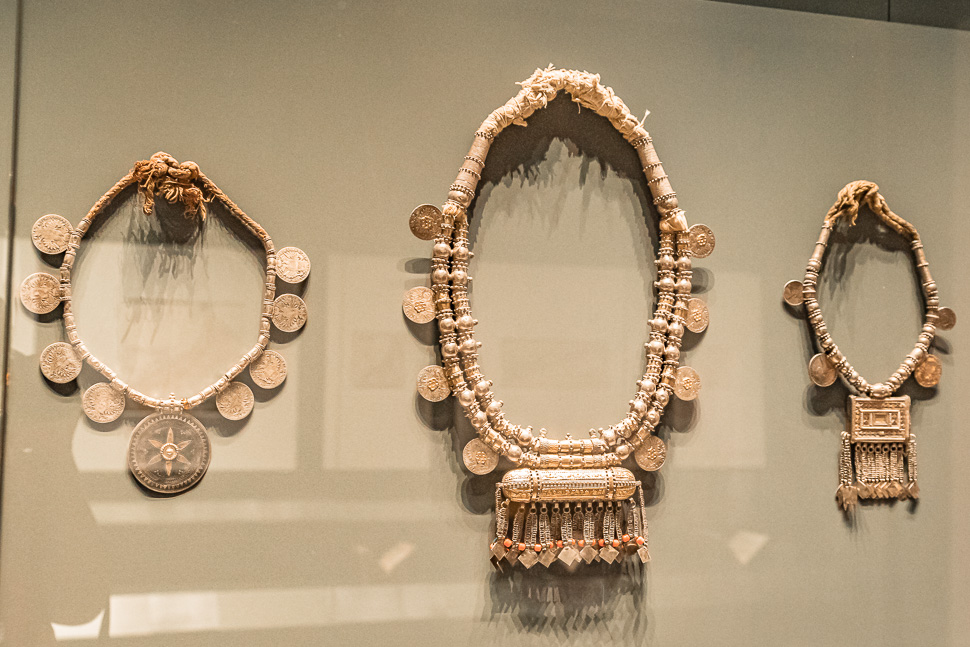
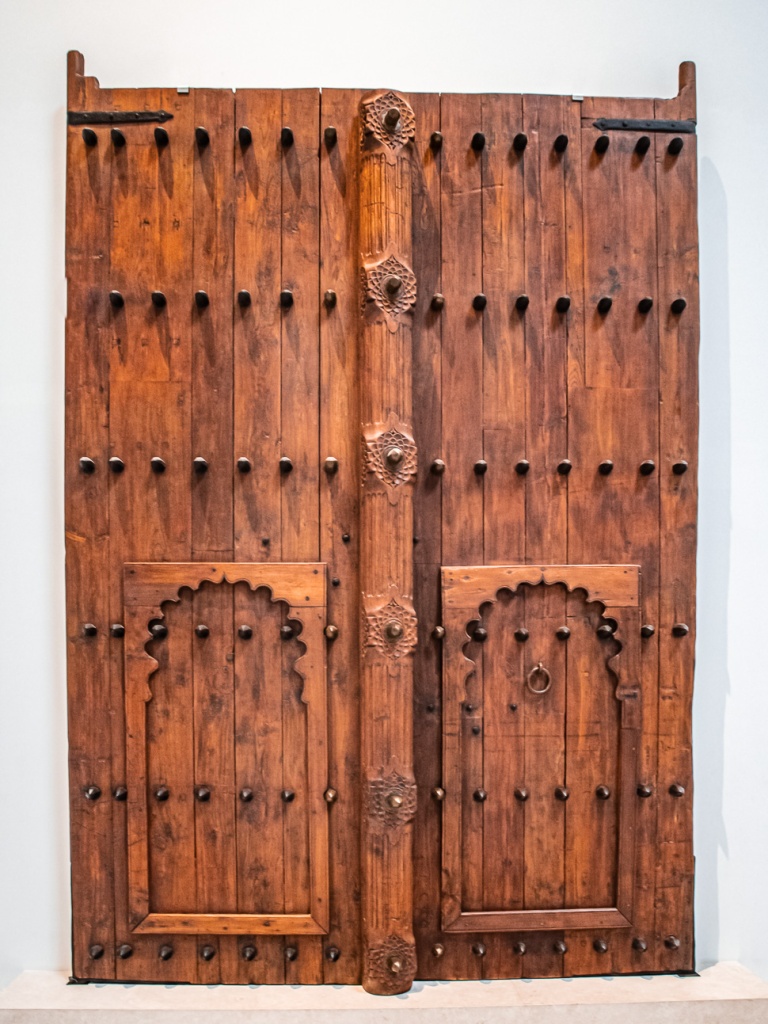
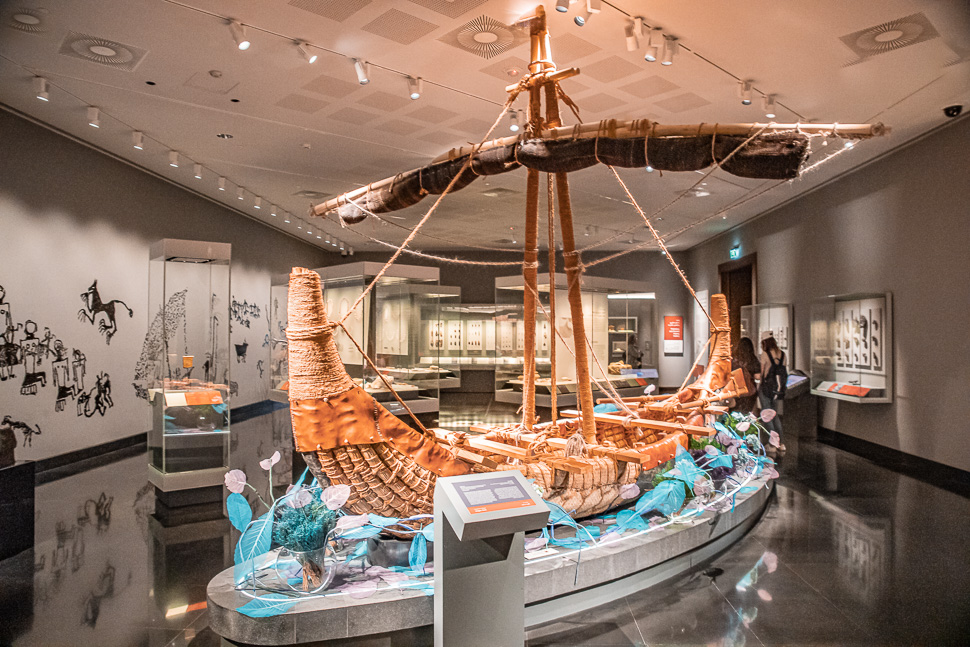
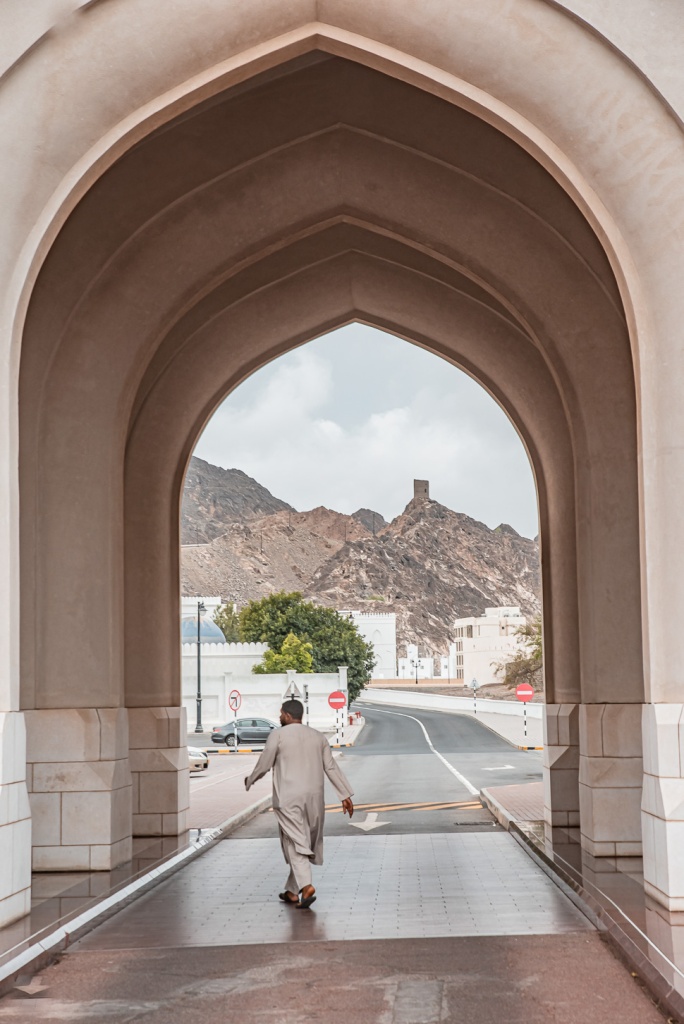
Opposite of the museum lies the Al Alam Palace, a ceremonial palace of the Sultan. It has a history of over 200 years, but the existing palace, which has a facade of gold and blue, was rebuilt as a royal residence in 1972. It is surrounded by 2 Portuguese forts built in the 16th century.
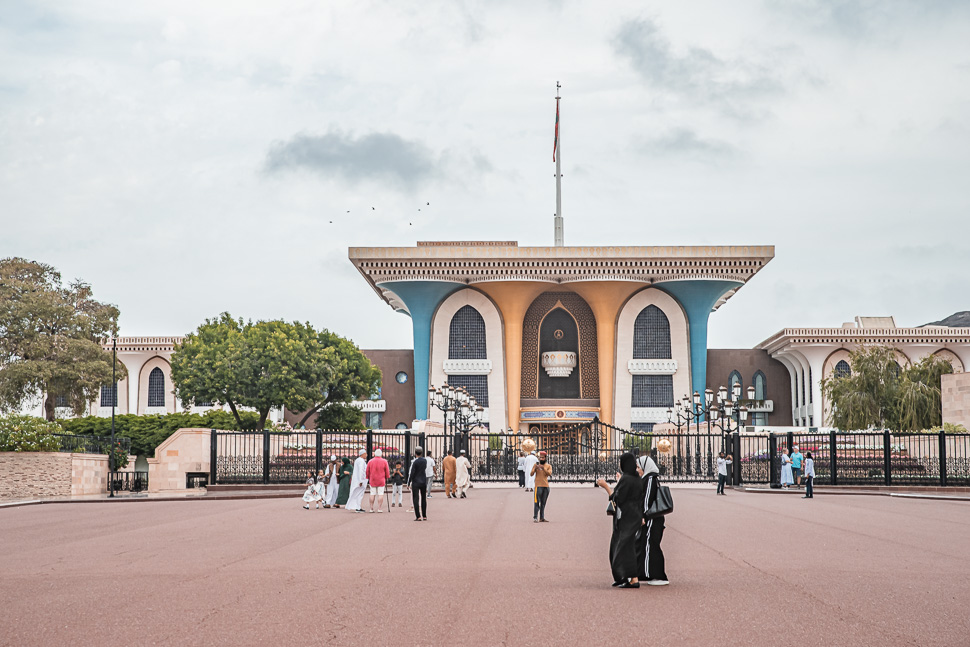
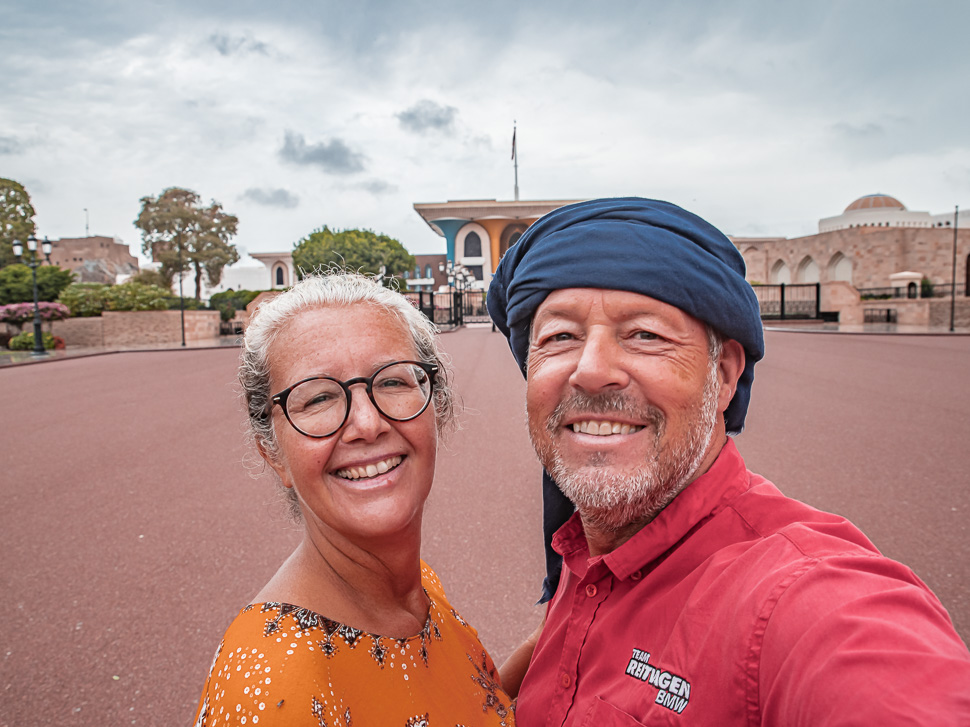
At Muttrah harbour lies the oldest souq of Oman, dating back 200 years, which has seen immense trade in the age of sail, being strategically located on the way to India and China. The souq is called Al Dhalam Souq, which means darkness, because of the crowded stalls and lanes where the sun rays did not infiltrate during the day. Today the souq is modernized, but the lanes are still narrow, and beside the stall for tourists, there are still all the stalls selling goods the locals need, mainly household goods, shoes and ready-made garments, but also frankincense, perfume oils, fresh jasmine, and spices, gold and Omani silver, white dishdashas (long-sleeved ankle-length traditional robes for men), embroidered brightly coloured cloth, and multicoloured headscarves. Much to look at, while wondering through all the lanes.
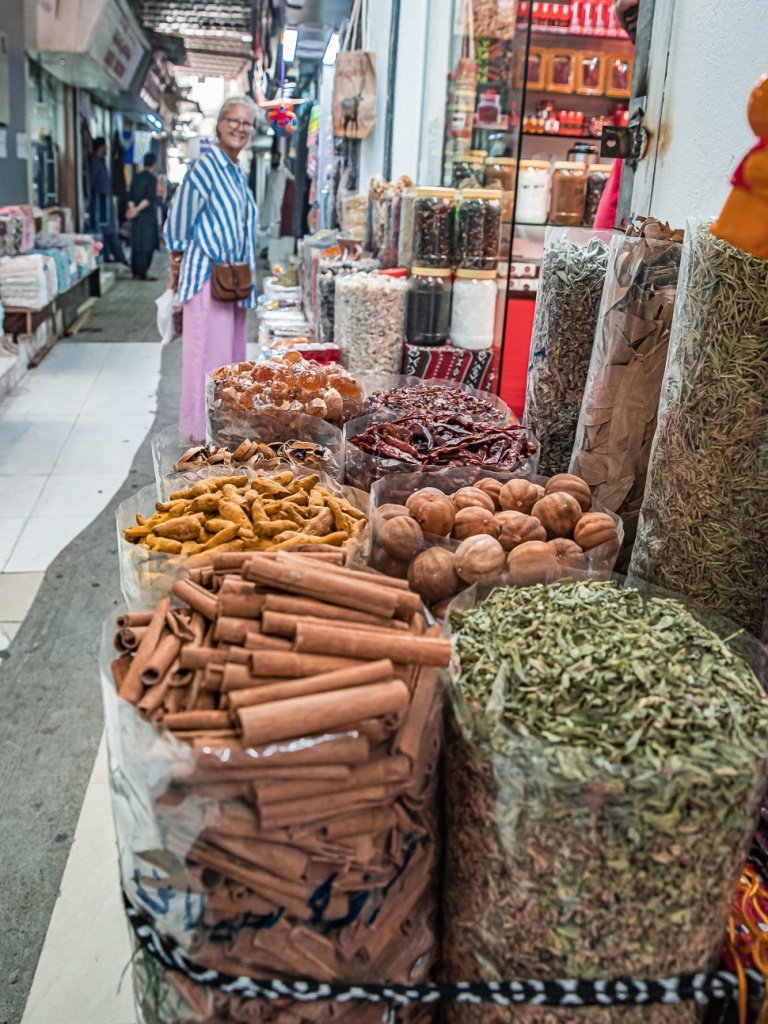
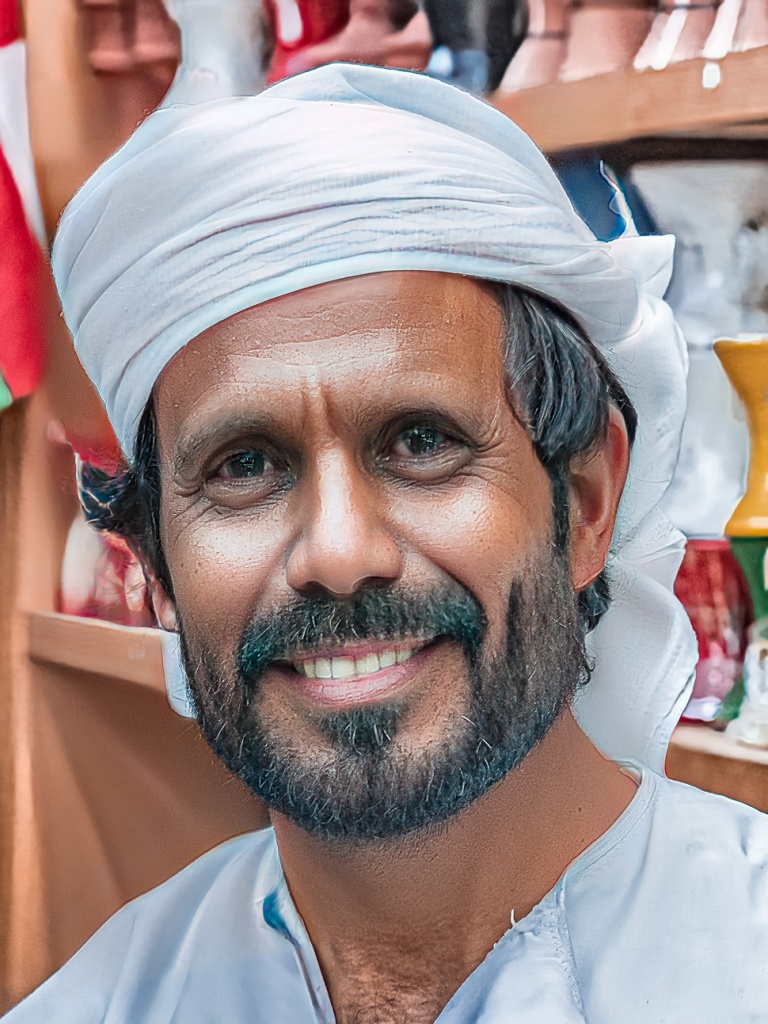
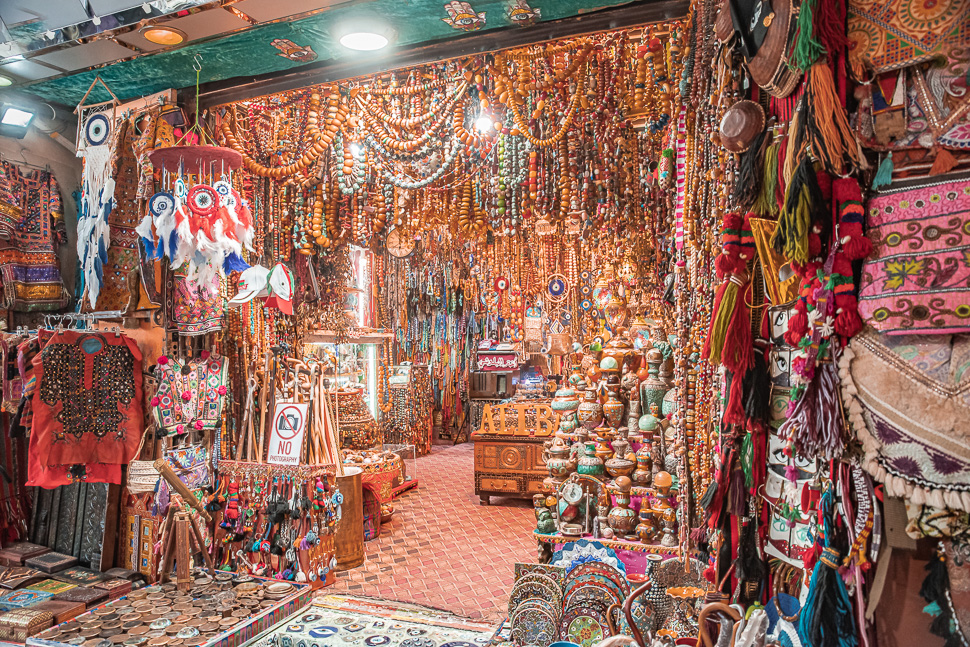
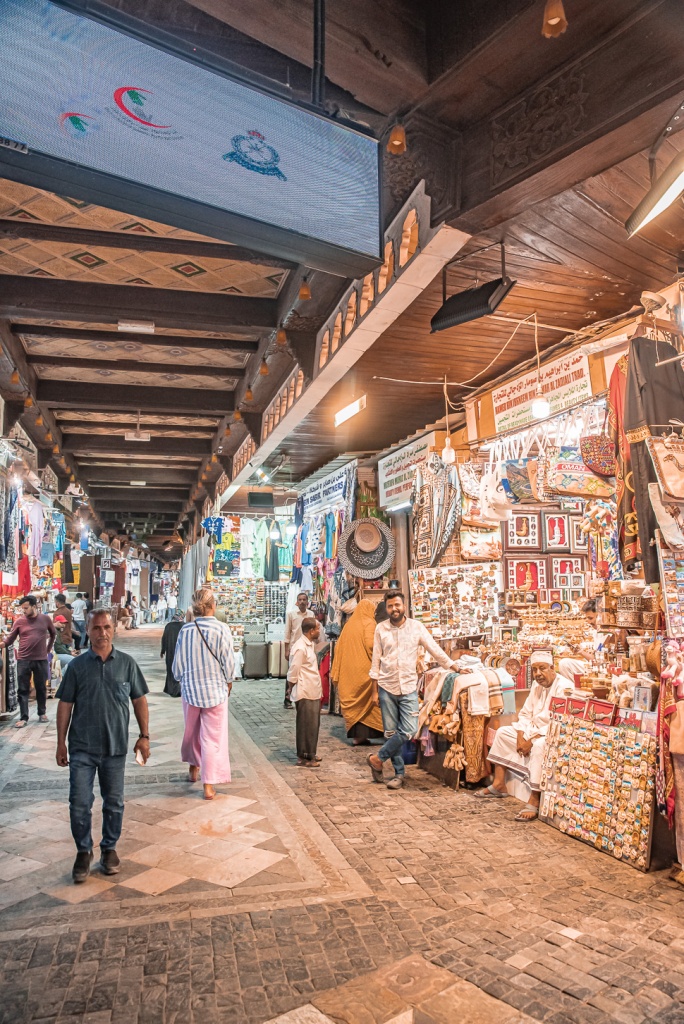
We bought some frankincense and our new mascot, a camel called Omani.
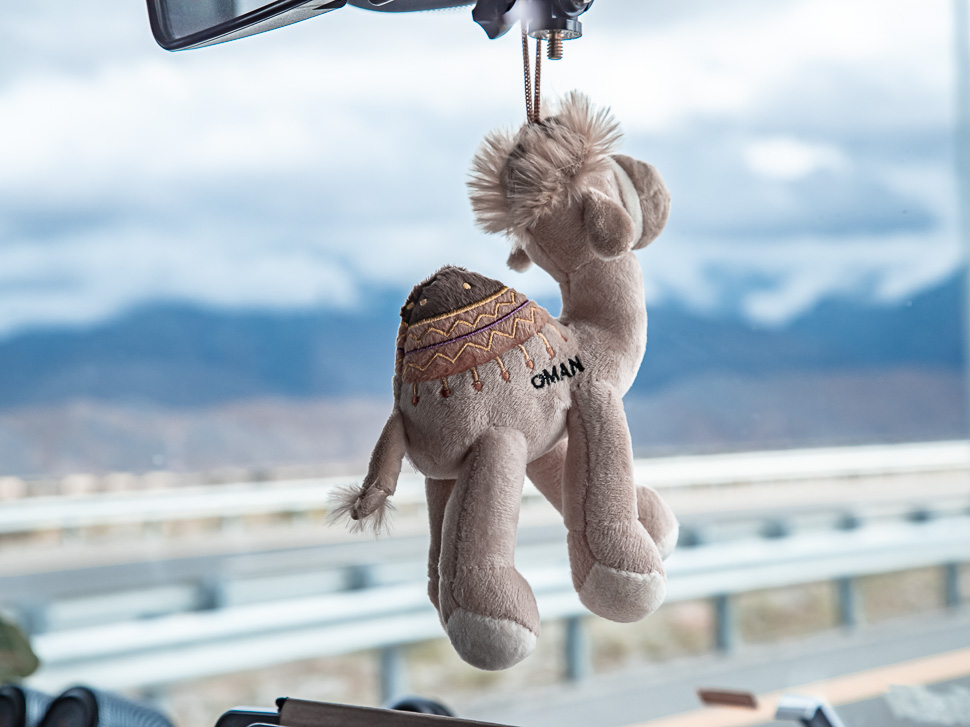
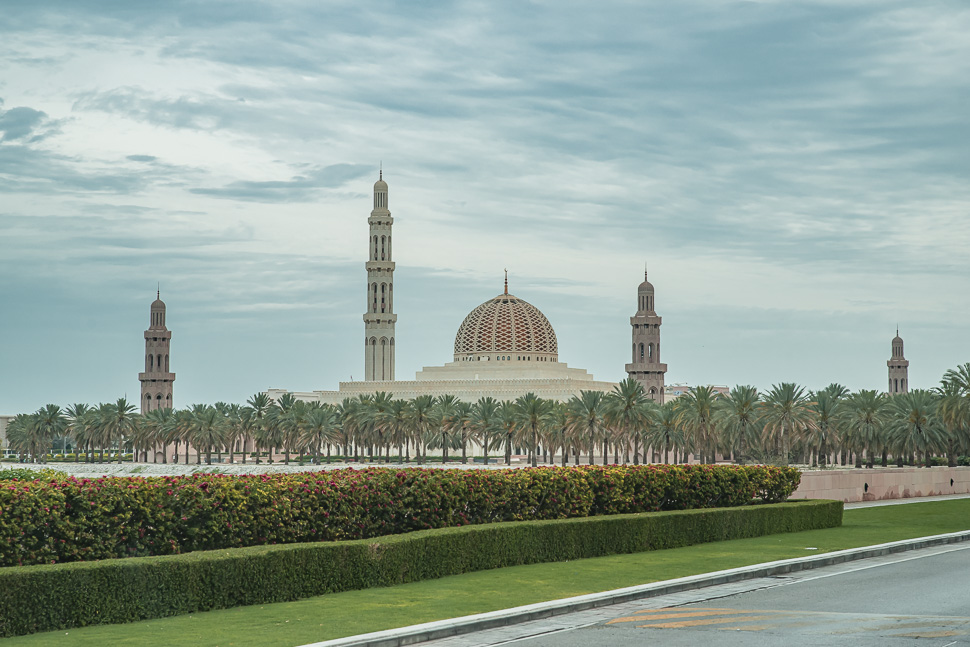
After the weekend (Friday and Saturday) the Sultan Qaboos Grand Mosque was open for tourists again, and we paid it a visit. The mosque is really impressive and different to the ones we had seen before. The sultan had many national but also international designs integrated. The whole building is made of Indian sandstone. The carpet in the prayer hall took four years to produce, knotted by hand by 600 women. 28 colours in varying shades were used, the majority obtained from traditional vegetable dyes. It is now the second-largest carpet in the world. Maybe soon, we will get to see the largest one in Abu Dhabi.
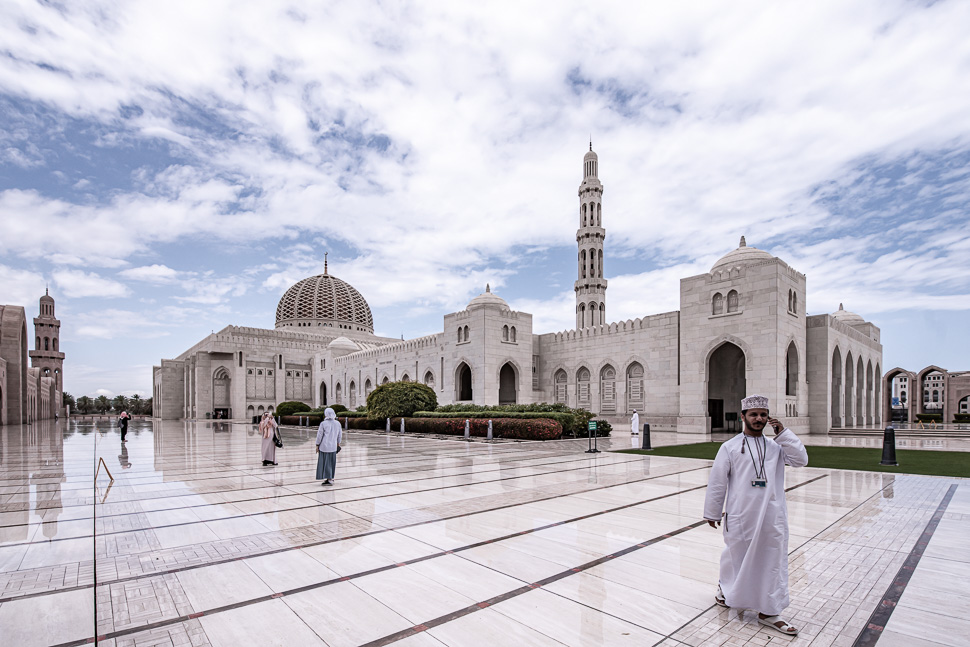
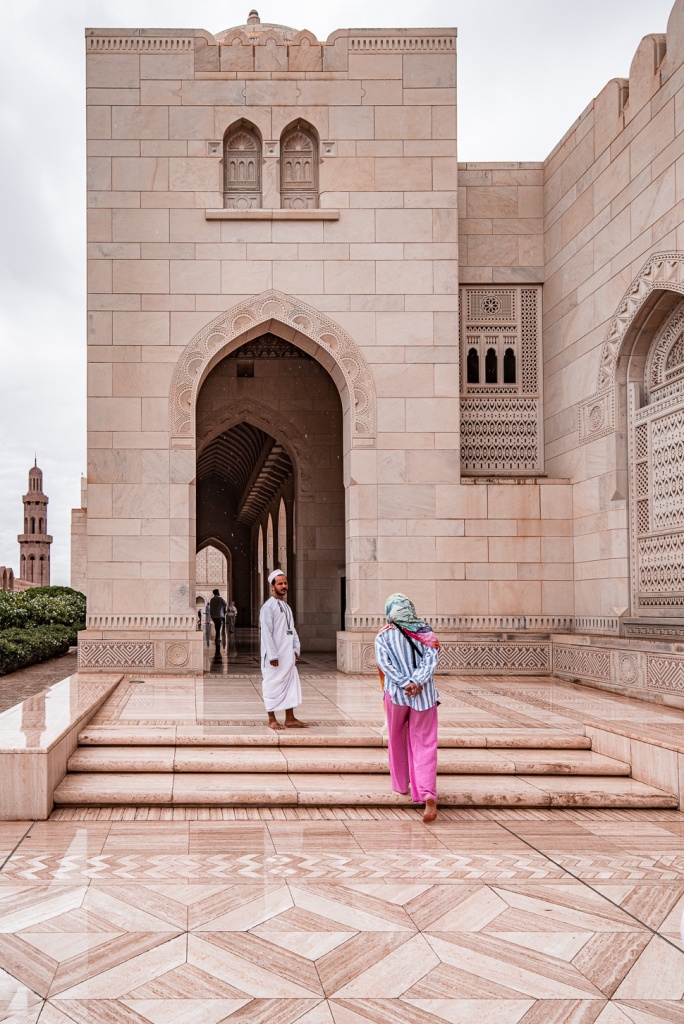
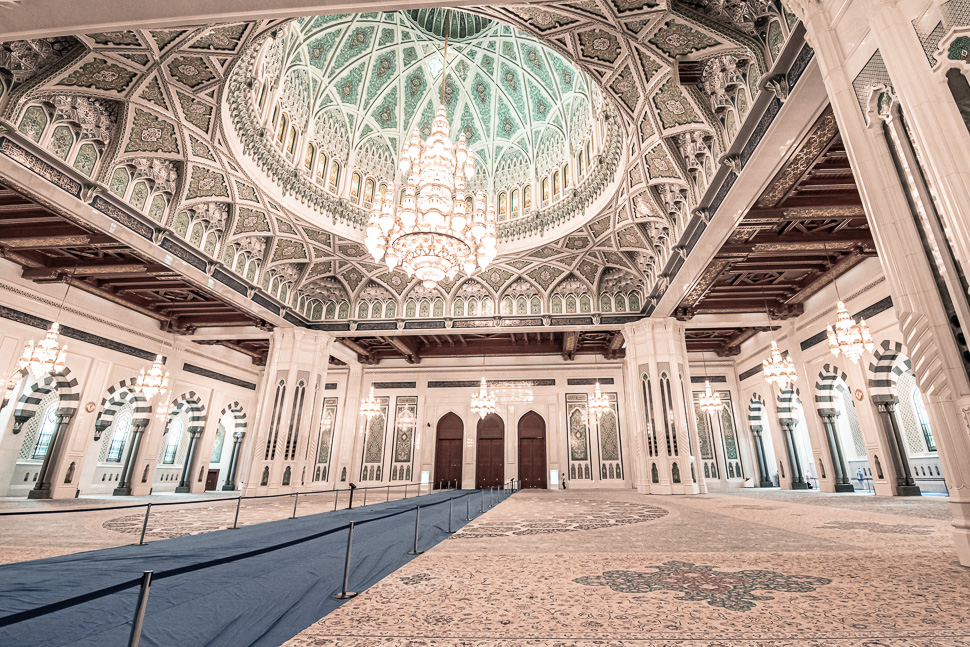
The arches in the prayer hall reminded us of the ones in the mosque of Córdoba/Spain, window grilles had a Moroccan pattern, the wooden ceiling was inspired by the fortress in Nizwa/Oman.
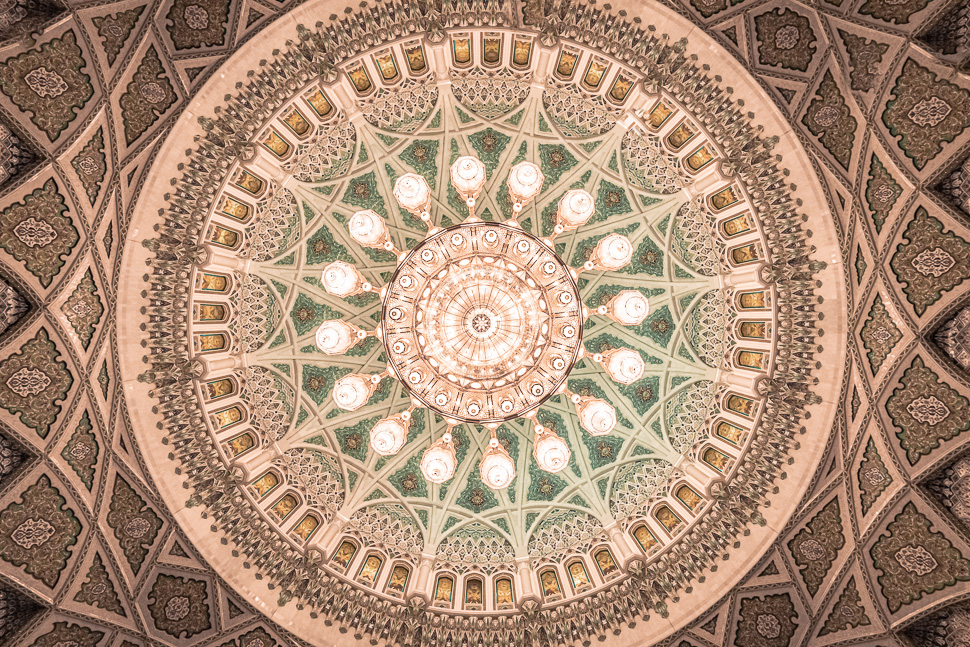
The chandelier above the praying hall is 14 metres tall and was manufactured by the Italian company Faustig, using Austrian Swarovski crystals. It weighs 8.5 tons, includes 600,000 crystals, 1,122 halogen bulbs complete with a dimming system, and a staircase for maintenance within the chandelier!
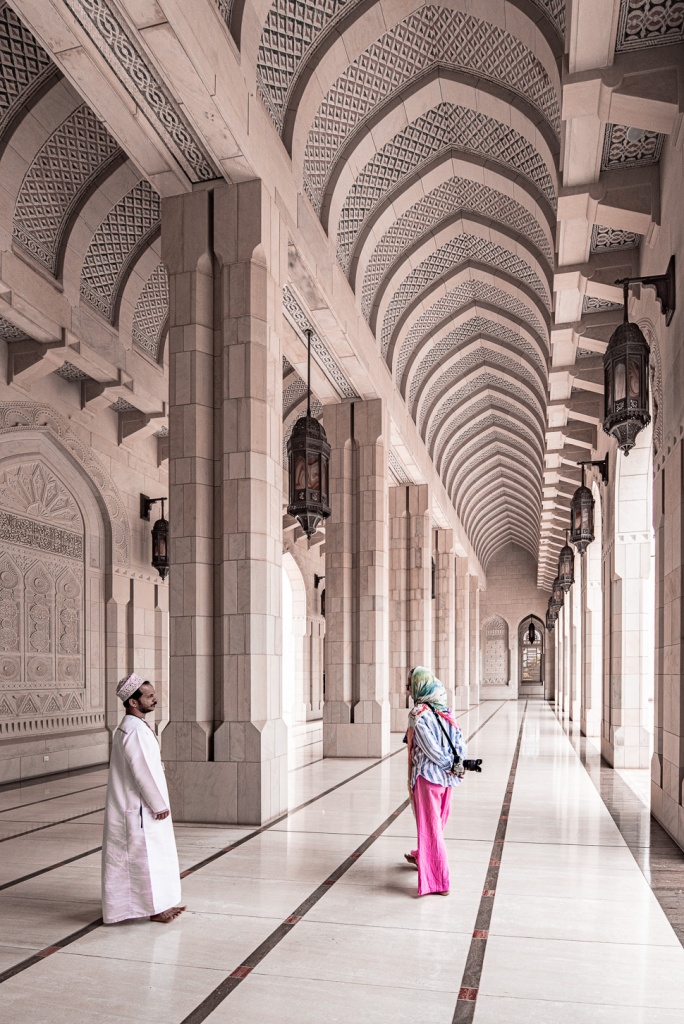
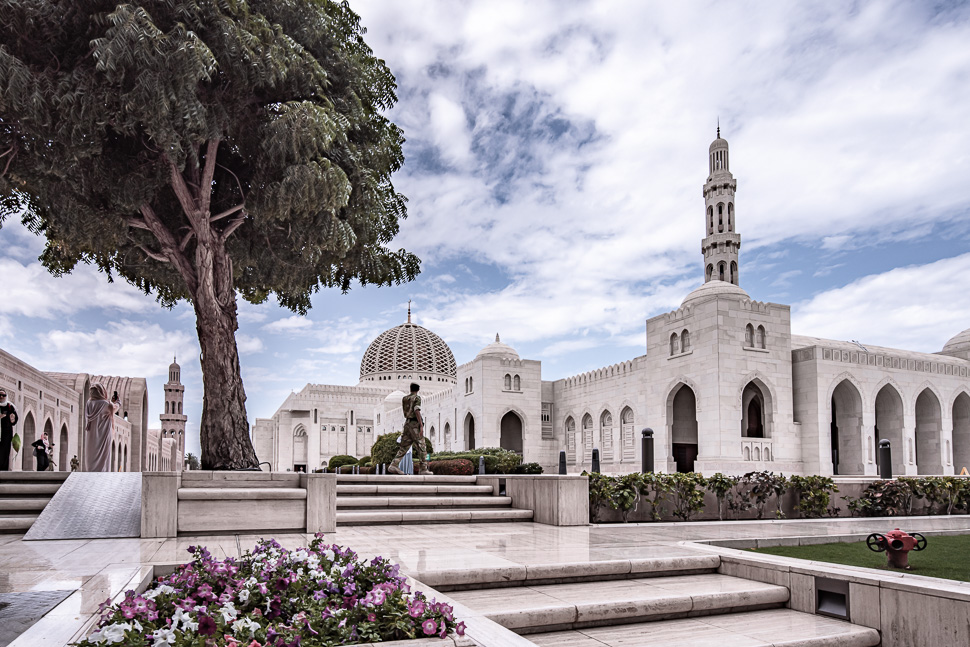
We also spent some time at the beach and visited nice restaurants in Muscat, but we also did some bird watching. We stayed close to Qurm beach next to a hotel, where we could park in the shade of some trees. One morning, we were surrounded by cars, horses and riders, who also used the shade of the trees for their camp.
